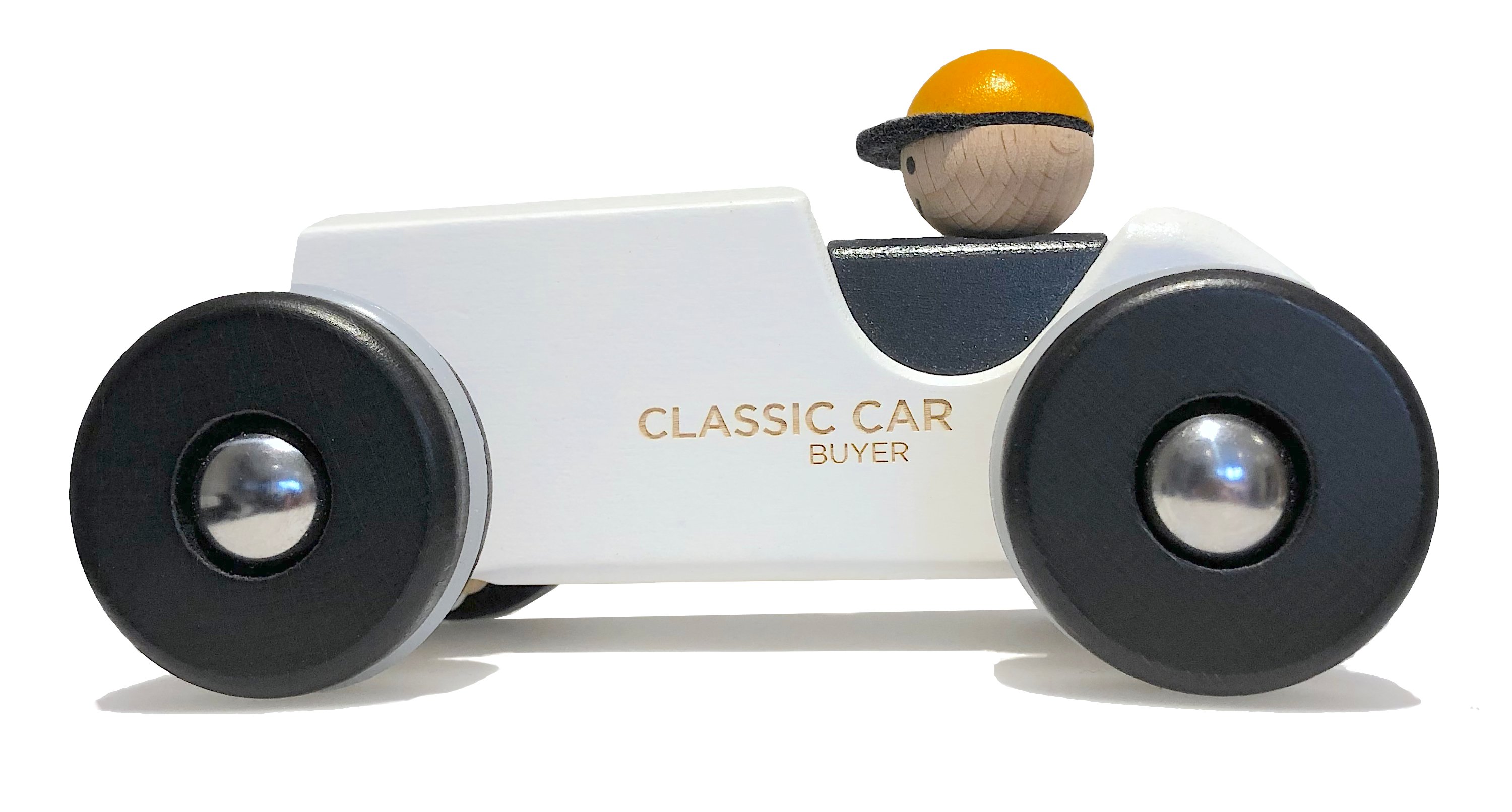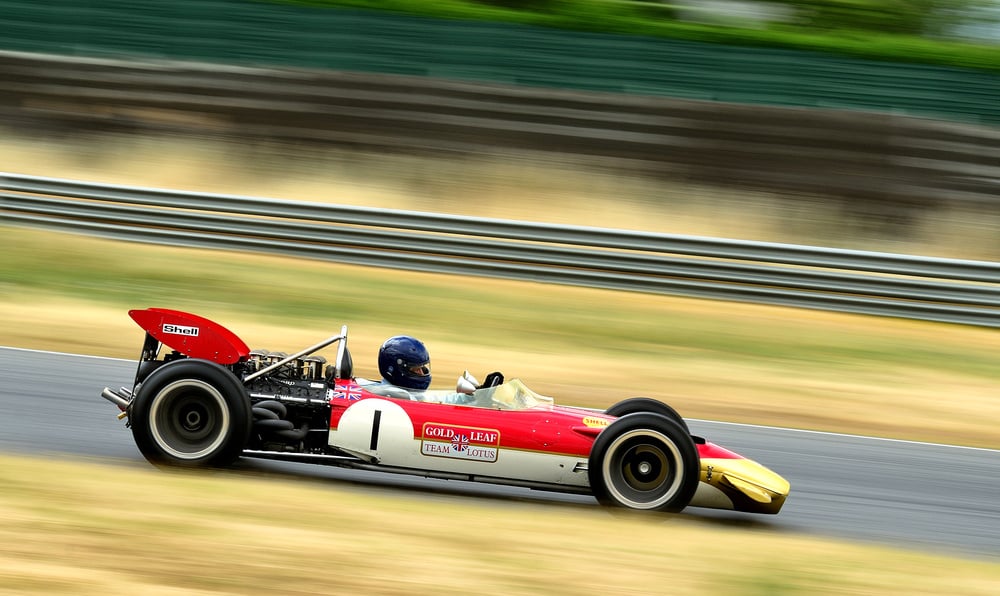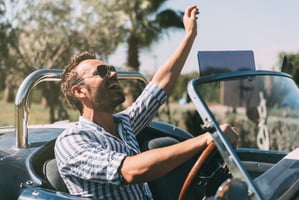You might agree that owning a classic car is rarely just about having a vehicle to get you from A...
The UK has long been at the heart of motorsport, producing some of the most iconic and successful racing cars in history. From innovative engineering breakthroughs to unforgettable performances on the track, British car manufacturers have consistently pushed the boundaries of what’s possible in motor racing. Here, we take a look at a handful of the greatest classic racing cars across the decades to come out of the UK, each of which has left its own mark on the sport. We know we haven’t listed them all - there really isn't the space!
1. Jaguar D-Type (1954-1957)

The Jaguar D-Type is often hailed as one of the most beautiful and influential racing cars ever built. Designed primarily for endurance racing, the D-Type was a technical marvel, featuring an aerodynamic monocoque chassis and a sleek body designed to minimise drag. Its most distinctive feature was probably the large fin that extended behind the driver’s head, aiding stability at high speeds.
Under the bonnet, the D-Type was powered by Jaguar’s proven 3.4 litre straight-6 engine, which had already seen success in the Jaguar C-Type. The D-Type’s performance was pretty staggering for its time, with a top speed of over 172 mph on the Mulsanne Straight at Le Mans.
The car’s success on the track was equally impressive. It won the prestigious 24 Hours of Le Mans three times in a row, from 1955 to 1957. The combination of its speed, innovation and graceful design has made the Jaguar D-Type a classic in the motorsport world, and a true symbol of British engineering excellence.
2. Lotus 49 (1967)

The Lotus 49 changed the face of Formula 1 racing when it debuted in 1967. Designed by the brilliant Colin Chapman and Maurice Philippe, the Lotus 49 was the first car to fully integrate the engine as a stressed member of the chassis, a design that would become the norm in Formula 1 for decades to come. This innovation allowed for a lighter and more rigid car, improving performance on the track.
The Lotus 49 was powered by the legendary Ford Cosworth DFV engine, which quickly became the dominant force in Formula 1 throughout the late 1960s and 1970s. The car’s first outing at the Dutch Grand Prix in 1967 was nothing short of remarkable, with Jim Clark taking victory in its debut race.
Its combination of engineering brilliance and outright speed led to multiple race wins. Ultimately the Lotus 49 set the standard for modern F1 car design, making it one of the most important and influential cars in the history of the sport.
3. Aston Martin DBR1 (1956-1959)

The Aston Martin DBR1 holds a special place in British motorsport history, being the car that delivered Aston Martin its only outright victory at the 24 Hours of Le Mans in 1959. With its sleek, low-slung body and a powerful 2.5 litre straight-6 engine, the DBR1 was built for endurance racing.
In 1959, the DBR1 achieved what many considered impossible, winning not only at Le Mans but also securing the World Sports Car Championship. The driving pair of Carroll Shelby and Roy Salvadori took the victory at Le Mans in DBR1/2, while the car also found success in other endurance events such as the 1000km Nürburgring.
Only five DBR1s were ever built, making it one of the rarest and most valuable racing cars in the world - indeed, in 2017 DBR1/1 was sold for over US $22.5 million!
Its performance, elegance, and historical significance make it one of the most revered British racing cars of all time. What a star!
4. McLaren M23 (1973-1978)

The McLaren M23 was one of the most successful Formula 1 cars of the 1970s and played a crucial role in establishing McLaren as a dominant force in the sport. Introduced in 1973, the M23 was a versatile and reliable car, known for its excellent balance and handling. It was designed by Gordon Coppuck and built with a focus on aerodynamics, which helped it maintain competitiveness throughout its lifespan. 13 chassis were built, but just the numbers 1-12 and 14 were used, as calling one ’13’ was deemed unlucky.
Powered by the now-legendary Ford-Cosworth DFV engine, the M23 delivered McLaren’s first-ever Constructors’ World Championship in 1974, with Emerson Fittipaldi taking the Drivers’ Championship the same year. Two years later, in 1976, James Hunt drove the M23 to his famous World Championship victory.
The McLaren M23’s success on the track, combined with its longevity, made it one of the most important racing cars of the 1970s. Its legacy lives on as one of the cornerstones of McLaren’s racing heritage.
5. Bentley Speed Six (1926-1930)

Photo credit: Jonathon Wood
The Bentley Speed Six was a pre-war icon of endurance racing, known for its incredible durability and speed, which led it to become the most successful racing Bentley ever. Finally introduced in 1928, the Speed Six was powered by a massive 6.5 litre straight-6 engine, which gave it the power to dominate races like the 24 Hours of Le Mans.
Bentley’s philosophy at the time was ‘to win by power’, and the Speed Six exemplified this. It won Le Mans twice, in 1929 and 1930, and was driven by the famous ‘Bentley Boys’, a group of wealthy and adventurous British racers. The 1929 victory was particularly memorable, as Bentley took the top four positions at Le Mans, with the Speed Six leading the way.
The Speed Six was a marvel of engineering for its time, combining power, reliability and a touch of British luxury. Its success at Le Mans and its status as an early British racing legend surely make it one of the greatest racing cars in the nation’s history.
***
These classic British racing cars represent different eras of motorsport, but all share a common legacy - one of innovation, performance, and winning! From the sleek and aerodynamic Jaguar D-Type to the revolutionary Lotus 49, these cars have helped shape the history of racing and continue to be celebrated today - and, their victories on some of the world’s most prestigious tracks helped cement Britain’s place as a leader in motorsport engineering and design.
So what do you think of our selection? What should we have included? Let us know in the comments!







